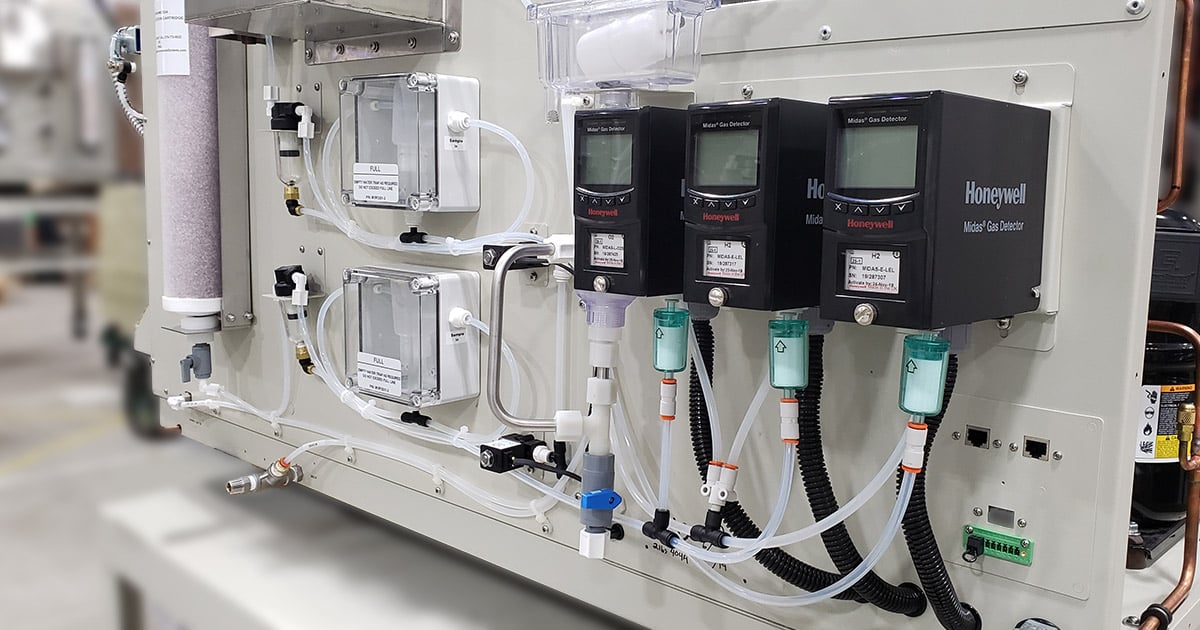How to Prepare Your Humidity Chamber for Lockdown

In a perfect world, you’d have full control of your testing schedule. It’s one of the reasons companies purchase their own test chambers instead of outsourcing or renting them. They can test how often and whenever they’d like to make sure the best versions of their products hit the markets.
Sometimes, however, things outside of your control force you into lockdown. In 2020, we saw states close ‘non-essential’ facilities to slow the spread of COVID-19. Those shutdowns were particularly challenging for labs with temperature and humidity chambers. Water, even in small amounts, can lead to mineral build-ups, mold, and mildew, maintenance issues that can limit performance over time. It also tends to dissolve whatever it’s sitting in, damaging the components of your test chamber from the inside.
In that sense, one scheduled disruption could lead to more if you have to spend significant time bringing the test chamber back up to speed following the break.
Hopefully, these extended lockdowns won’t continue, but if they do, it’s good to be prepared. Here are some things you can do to get back to your normal testing in no time.
Run Your Chambers
Have you ever started up your car after not driving it for weeks or a snowblower to clean up your driveway after the first winter storm of the year? The engine revs up just a little bit slower. It may even take a few tries to catch. Even when you get it going, it may take a while to get up to full speed.
The same rule of thumb applies to test chambers: They operate best when they’re used on a regular basis. This is especially important as you approach an extended break. When you get back and have to make up for lost time, you’ll want a chamber that’s in top condition.
Even if you have no plans to test in the short term, take the time to run your test chambers to their extremes in temperature and humidity.
Conduct Maintenance & Drain the Water
Regular maintenance is a key component of making your test chambers last. Conducting quarterly and annual checks will keep them performing for 10 years or more. In temperature and humidity chambers, the presence of water adds an extra step.
As stated in the introduction, if left untreated, sitting water can leave a range of problems in its wake, from rust to mineral build-up to mold and mildew, all of which compromise performance. If you spot a leak during an inspection, it’s probably too late to make a quick fix.
Prior to heading into lockdown, thoroughly examine all components of your test chambers to avoid any expensive repairs that could delay your testing even more (a full breakdown is available in our service guide). Wash the external water tanks and purge the water from the test chamber. To purge the water, shut off or disconnect the water source from the float fill tank. Open the drain valve to allow the water to drain from the float tank and steam generator. On most systems, the drain is directly below the float tank. On some, it will be in the lower compartment of the chamber.
In addition, if it’s applicable, check the demineralizing cartridge. The demineralized cartridge will change color when it needs to be replaced so look for signs of fading. When there's about a quarter of the original color remaining, it's time to replace it.
If you identify any issues beyond the regular maintenance, such as leaks, get them addressed as soon as possible. The last thing you want is to return to your lab to a problem that has only worsened in the time away.
Lockdowns are disruptive in many ways, but don’t let them derail your long-term testing plans. By properly preparing for time away, you can hit the ground running on your return.
If you have any questions specific to your temperature and humidity chambers, contact Associated Environmental Systems. We offer maintenance and service plans that deliver timely solutions and advice in addition to peace of mind.


